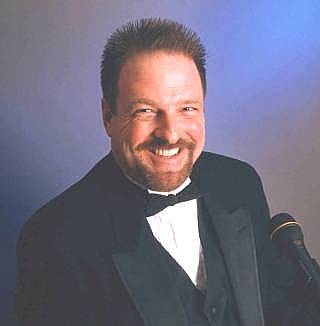






3853 Atlantic Ave.
|
Click here |
Schwarzenegger OK's CA Execution One Minute Past Midnight Tonight (Jan 18-19); We Post Text Of His Clemency Decision
(January 18, 2005) -- CA Governor Arnold Schwarzenegger has denied a request for clemency by Donald J. Beardslee, convicted by a jury on two counts of first decree murder committed in 1981 and sentenced to death. Mr. Beardslee had previously confessed to a 1969 murder in Missouri, served seven years..and was paroled to California in 1977.
Mr. Beardslee is now scheduled to be put to death by lethal injection at one minute past midnight on January 19, 2005.
We post the full text of the Governor Schwarzenegger's decision below:
Request for Clemency by Mr. Donald J. Beardslee Mr. Donald J. Beardslee was convicted by a jury of two counts of first degree murder and sentenced to death. He is scheduled to be executed for one of these murders on January 19, 2005. These are not the first killings Beardslee has committed. In December of 1969, Beardslee met Laura Griffin in a Missouri bar and accompanied her to her home. After they arrived, he strangled Ms. Griffin with his hands, held her head underwater in the bathtub, and stabbed her in the throat. He later confessed to the killing and pled guilty to second-degree murder. After serving seven years in a Missouri penitentiary, he was paroled in 1977 to California. Four years later, Beardslee was still on parole for the Missouri murder and was living in a Redwood City apartment. On April 24, 1981, he returned home from work and discovered his roommate, Ricki Soria, and a few of her friends making plans to harm 19-year-old Stacy Benjamin over a drug-related monetary dispute. This group, consisting of Soria, William Forrester, and Frank Rutherford, planned to lure Ms. Benjamin to Beardslee's apartment and then force her to give them the money. While Soria, Forrester, and Beardslee were waiting at the apartment for the two women to arrive, Rutherford tied a piece of wire to some shotgun shells, fashioning a garrote. Ms. Benjamin and her friend Patty Geddling then arrived, and Beardslee answered the door. Once the women were inside the apartment, Beardslee closed the door, and Rutherford fired a double-barreled sawed-off shotgun, striking and wounding Ms. Geddling in the shoulder. Eventually, Beardslee put Ms. Geddling into a van driven by Forrester and told her they were taking her to a hospital. Soria followed them in Beardslee's car. Instead of stopping at a hospital, the two vehicles drove south along the California coast until Beardslee told Forrester to turn off the main road. After coming to a stop, the men exited the van and Beardslee retrieved and loaded the sawed-off shotgun and handed it to Forrester. Ms. Geddling pleaded for her life, but Forrester shot her twice. Beardslee then reloaded the gun and shot Ms. Geddling two more times. Forensic evidence showed that Beardslee shot Ms. Geddling in the head and that his shots actually killed her. The trio left Ms. Geddling's body in a ditch and fled the area, Soria driving the van and Beardslee driving his car. When the van ran out of gas, the threesome abandoned the vehicle, wiped it clean of fingerprints, and returned to Redwood City in Beardslee's car. Beardslee and Soria later dropped Forrester at another location and traveled to a different apartment where Ms. Benjamin was being held. Shortly thereafter, Beardslee, Rutherford, Soria, and Ms. Benjamin got into Beardslee's car and drove north to Pacifica. All of them used cocaine while they were in transit. Once the foursome crossed the Golden Gate bridge, they continued north to Lake County and stopped on a deserted road. Rutherford coaxed Ms. Benjamin from the car, and Beardslee and Soria wandered away from the vehicle. After walking a short distance, Beardslee turned back and found Rutherford strangling Ms. Benjamin with a wire. He thought he noticed a "pleading look" on her face, so he punched her in the temple. He then took one end of the wire from Rutherford and pulled on it. When the wire broke, Beardslee asked Rutherford for his knife, and used it to cut Ms. Benjamin's throat. Forensic evidence showed that Ms. Benjamin died from the knife wound. Beardslee was arrested by police several days after the murders. A jury, after hearing the evidence, found him guilty of murdering both young women. Following the two first-degree murder convictions, a jury returned a death verdict for the killing of Patty Geddling. To date, all state and federal courts have affirmed Beardslee's conviction and death sentence. With the assistance of his attorneys, Beardslee has appealed to me for an act of executive clemency. He is asking that I exercise my power under Article V, section 8(a), of the California Constitution to commute his sentence of death to one of life in prison without the possibility of parole. Beardslee advances several reasons why his life should be spared. He argues that death is an unjustly severe punishment when his role in these crimes is compared to his associates. However, Beardslee was the only one of the accomplices with a prior murder conviction. In fact, he was on parole for this prior murder when he committed the grisly and senseless killings of Patty Geddling and Stacy Benjamin. He was also the only of the partners in crime who administered the coup de grace to each of the murdered women. Given these facts, I cannot disturb the jury's penalty of death on this basis. Beardslee also argues that his model behavior for years in prison warrants mercy. While I commend Beardslee for his prison record and his ability to conform his behavior to meet or exceed expected prison norms, I am not moved to mercy by the fact that Beardslee has been a model prisoner. I expect no less. Finally, and most significantly, Beardslee argues that his life should be spared because his criminal acts were performed as a result of his being in a dissociative state at the time of the crime due to long-standing mental impairments that compromised his executive functioning and judgment when he was under extreme stress. Beardslee claims that the stress of the fatal events of the evening of April 24, 1981, interfered with his ability to make reasoned decisions, rendered him unable to process emotions, and caused him to dissociate from events into some kind of fugue state. This claim warrants more extensive discussion. The evidence supporting Beardslee's application suggests that he suffers from a mental impairment that has resulted-at least in part-from serious injuries he sustained prior to the murders. There is also some reason to believe that some of his mental impairment has existed since birth. But we are not dealing here with a man who is so generally affected by his impairment that he cannot tell the difference between right and wrong. We also are not dealing with a claim that Beardslee's mental condition has resulted in subaverage intellectual functioning or impairments in his adaptive skills of everyday living. That is not the case. Beardslee can function at a very high level. In fact, the expert neuropsychologist retained by his lawyers in connection with these clemency proceedings stated at the Board's hearing that in many areas Beardslee performs quite a bit better than the average person. His reading and comprehension scores are good. He got B's and C's in high school. He had a good personnel record in the Air Force where he was a jet engine mechanic. He earned A's, B's and C's when he attended the College of San Mateo while he was on parole for the Missouri murder. He had a good work history at Hewlett Packard where he was employed as a fabricator. Over the course of his life, Beardslee has been employed as a machine operator, machine set-up man, apprentice machinist, and employment counselor. He also did a good job in all of his prison work assignments in both Missouri and California. Indeed his prison behavior has been described as exemplary. The question for me is whether Beardslee acted in a dissociative state due to mental impairments when he murdered two women in the course of the horrific events that transpired on April 24, 1981. And, if so, whether that fact sufficiently impeded his comprehension of the heinous nature of his crimes such that it inspires in me mercy compelling enough to set aside the jury's sentence and commute death to life in prison without parole. It seems consistently reported that on the evening of April 24, 1981, Mr. Beardslee showed little or no emotion once Ms. Geddling was shot when she entered his apartment. In fact, many observers have reported that Beardslee has had such a flattened affect for much of his life. It is argued that this lack of emotion is a symptom and byproduct of his mental deficiency. That may be. But in and of itself, the fact that Beardslee had a flat affect the evening of April 24, 1981, does not have persuasive value that he acted on "autopilot" that evening and had no capacity to make reasoned decisions. This is especially true when one understands that this flattened affect is usually present in his personality. Moreover, the argument that Beardslee acted in some sort of dissociated fugue state is not clearly supported by his actions or his numerous accounts of the events of that horrible night. On the afternoon of the murders, Beardslee agreed with the other participants that Ms. Geddling and Ms. Benjamin would be taught a lesson that evening in Beardslee's apartment. Beardslee drove to pick up one of the participants, Rutherford, and brought him back to the apartment.[1] Rutherford brought with him the shotgun. Beardslee directed another accomplice to go out and buy tape that could be used to bind and gag the victims. After the women arrived at Beardslee's apartment and Ms. Geddling was shot, Beardslee explained to an inquiring landlord that the noise he heard was a firecracker that Beardslee intended to throw out the door but missed. Of the murder of Patty Geddling, in his confession Beardslee says he was committed to murdering her "from the first". After her murder, in addition to wiping down the abandoned van for fingerprints before they again met up with Rutherford, Beardslee and Soria vacuumed his car at a San Mateo car wash. Beardslee also disposed of the empty shotgun casings in a bay slough where they would not be found. Later, after the pair joined up with Rutherford and murdered Stacy Benjamin, Beardslee pulled the dead women's pants down in an effort to make it appear she was sexually assaulted. The day after the murders, he continued to clean his apartment and replaced cushions on his living room couch that had blood on them. These actions show Beardslee's consciousness of guilt and the nature and consequences of the murders he committed. Looking back in time to the state of Beardslee's mind on April 24, 1981, his counsel urge that I grant a reprieve to allow him to be administered a Magnetic Resonance Imaging or similar examination. But such a diagnostic tool is only a "snapshot" of a person's brain at a particular time, and it is questionable that such an examination would reveal information that could reliably form the basis for an appraisal of the condition of Beardslee's brain more than twenty three years ago. Moreover, while such a diagnostic tool may show anatomic injury to Beardslee's brain, the injury may not tell us anything about his behavior.[2] Finally, records of the interview of Beardslee performed by the neuropsychologist retained on his behalf in connection with his clemency application do not appear to be comprehensive. The extent of Beardslee's involvement and action in the murders of each of the young women, and perhaps more significantly his recollection and after-the-fact recounting of these events to police, make it hard for me to accept that Beardslee was dissociated and disconnected from the events of that fateful night. From a review of the events and Beardslee's actions following them, there is no question in my mind that at the time Beardslee committed the murders he knew what he was doing-and he knew it was wrong. Nothing in Beardslee's application, supporting papers, or testimony on his behalf before the Board convinces me that he did not understand that he committed two grisly murders and that his decision to take those actions was wrong. Clemency is not designed to undo the considered judgment of the people in favor of the death penalty, but to prevent the miscarriage of justice. The Board of Prison Terms unanimously recommended that I deny clemency to Beardslee. A copy of their recommendation is attached to this decision. After my own independent study and analysis, I agree with the Board. Although I have given serious consideration to Beardslee's plea for mercy, I do not believe the evidence presented warrants the exercise of clemency in this case. For this reason, Donald J. Beardslee's application for clemency is denied. Footnotes: [1] Frank Rutherford by all accounts appears to be the evil protagonist in this tragedy. He was sentenced to life in prison without the possibility of parole for the murder of Stacy Benjamin. He died in prison. [2] Ruben C. Gur, Andrew J. Sakin, and Raquel E. Gur, Neuropsychological Assessment in Psychiatric Research and Practice, in Robert Michaels, ed., PSYCHIATRY, revised edition -- 1991 (Philadelphia: J. P. Lippincott Company, 1991), ch. 72, pp. 1-16, at pp. 5-6.
Reuters coverage: Schwarzenegger OK's First CA Execution In Years
Contact us: mail@LBReport.com |